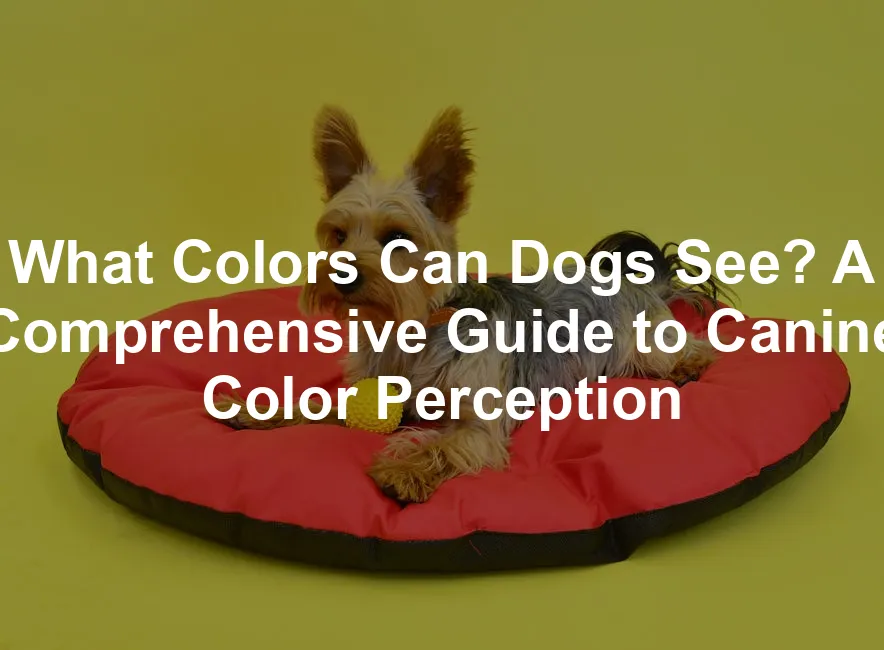Introduction
In a world bursting with color, it’s easy to forget that our furry friends see things quite differently. If you’ve ever wondered whether your pup can appreciate the vibrant hues of their toys or if they’re just living in a grayscale universe, you’re in for a treat! Contrary to the long-held myth that dogs see only in black and white, science reveals that their vision is a fascinating blend of color perception, much like a human who is red-green color blind.
Dogs have a unique visual experience. They primarily perceive colors in shades of blue and yellow. Imagine your dog staring at a bright red ball. While you see a vibrant hue, your pup sees it as a dull shade of gray or brown. Surprising, right? This limited color palette stems from the structure of their eyes. Dogs possess only two types of cones compared to humans, who have three. This is why their world appears less colorful and more muted.
But fear not! Dogs experience their environment in other ways. Their sense of smell is far superior to ours, allowing them to enjoy scents we can’t even register. So, while they might not see the rainbow like we do, they certainly have their own colorful world! So, grab a ball (preferably blue or yellow) and join us as we explore the colorful world of canine vision.
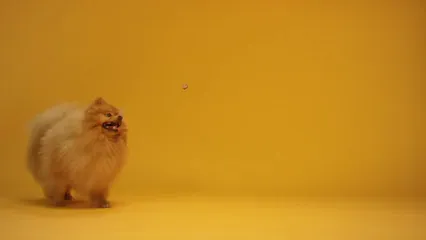
Speaking of toys, why not treat your furry friend to a KONG Classic Dog Toy? This iconic toy not only keeps dogs engaged but also helps with their dental health. It’s perfect for stuffing with treats, ensuring your pup has a fun and rewarding experience!
Summary of Key Points
- Dichromatic Vision: Dogs possess two types of cones in their retinas, allowing them to see primarily in shades of blue and yellow. Unlike humans, who have three types of cones, this limits their color perception to a narrower spectrum.
- Colors Dogs Can See: Blue and yellow are distinctly visible to dogs. Other colors, such as red and green, appear as shades of gray, brown, or muted yellow.
- Misconceptions: The belief that dogs see only in black and white stems from outdated research. Modern studies have shown that dogs can indeed perceive colors, although not as vividly as humans.
- How Dogs See the World: Dogs excel in low-light conditions due to a higher number of rod cells in their eyes and a reflective layer called the tapetum lucidum, enhancing their night vision.
- Practical Implications: Understanding canine color perception can help pet owners choose appropriate toys and training aids. Toys in blue and yellow are easier for dogs to see and engage with.
- Additional Senses: While their color vision is limited, dogs have an exceptional sense of smell, which plays a crucial role in how they interact with their environment.
- Visual Comparison: A side-by-side comparison of human and dog vision illustrates the differences in color perception and clarity.
Understanding how dogs see color enhances our connection with them. Next time you’re shopping for toys, opt for blue and yellow. Your furry friend will appreciate the thoughtfulness, and it’ll make playtime even more enjoyable!
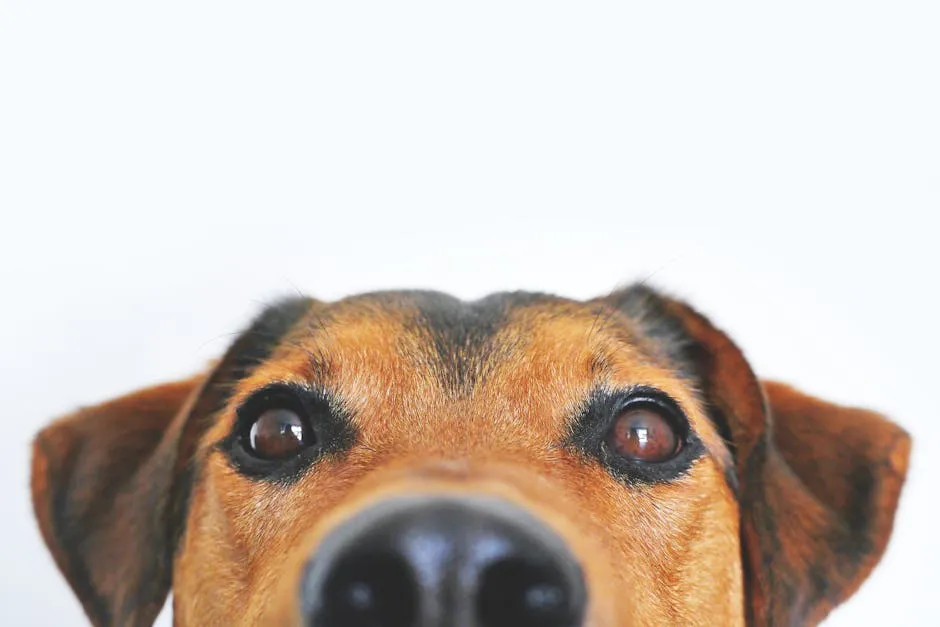
And if you’re looking for a fun way to keep your pup entertained, consider the Chuckit! Ultra Ball. This durable and bouncy ball is perfect for fetch and will keep your dog active and happy!
Understanding Canine Color Perception
The Science Behind How Dogs See Colors
Anatomy of the Dog’s Eye
Dogs have a fascinating eye structure that differs significantly from ours. Their eyes contain two types of photoreceptors: rods and cones. Rods are crucial for detecting light and motion, allowing dogs to see well in dim conditions. Cones, on the other hand, are responsible for color differentiation. While humans have three types of cones, dogs only possess two. This unique setup means that dogs experience the world through a narrower color spectrum.
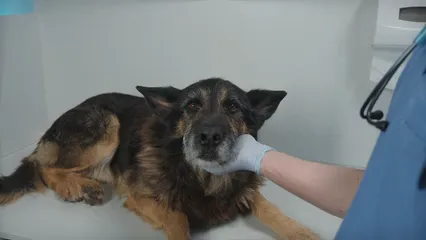
Cone Types
The two types of cones in dogs are primarily sensitive to blue and yellow wavelengths. This dichromatic vision allows them to perceive these colors distinctly. However, colors like red and green fall outside their visual reach. To a dog, these hues often appear as muted shades of gray or brown. So, the next time your pup seems unimpressed by that bright red toy, remember—it’s just not as vibrant in their eyes!
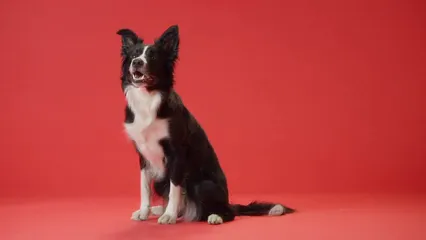
What Colors Can Dogs See Best?
Blue and Yellow
Dogs excel at seeing blue and yellow. These colors pop in their vision, making them ideal for toys and training aids. A vibrant blue ball or a bright yellow frisbee will stand out vividly against most backgrounds. This ability stems from the cones in their eyes, which are finely tuned to detect these wavelengths. If you want your dog to engage in play, opt for blue or yellow toys. They’ll be thrilled, and you’ll avoid any confusion!

Speaking of engaging toys, have you tried the Outward Hound Hide-A-Squirrel Puzzle Toy? It’s not only a colorful toy but also a fun challenge for your dog to find the squeaky squirrels hidden inside. Perfect for mental stimulation!
Variations of Color
Interestingly, dogs can perceive different shades of blue and yellow. Dogs may see a spectrum of blues ranging from light blue to darker shades. Yellow appears as a bright, cheerful color that can even include some shades of orange. But be wary—while they enjoy these colors, other colors can blend into the background. A green toy on grass? Not so much!
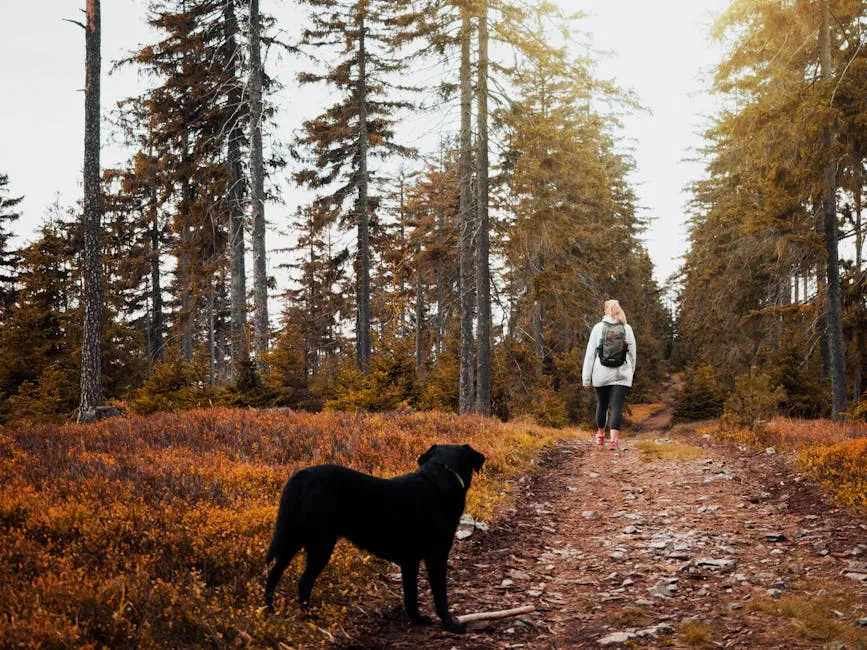
What Colors Can Dogs Not See?
Red and Green
Red and green are the culprits of canine confusion. To dogs, these colors might appear as dull grays or browns. This lack of perception means your dog may struggle to find a red ball in the grass or a green toy on a similar background. When choosing playthings, it’s wise to skip these colors. Instead, focus on blue and yellow to ensure your dog can easily spot their favorite toys.
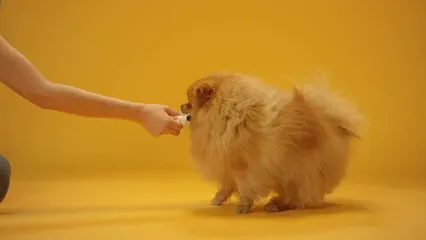
Common Myths About Dog Vision
Black and White Misconception
A popular myth suggests that dogs only see in black and white. This notion has its roots in outdated studies and a misunderstanding of canine vision. While dogs do not see the vibrant spectrum that humans do, they are not limited to merely black and white. Their world is painted in shades of blue and yellow, creating a more colorful experience than many realize. So, let’s debunk this myth! Dogs enjoy a delightful palette, albeit less expansive than ours.

Peripheral Vision and Depth Perception
Field of Vision
Let’s talk about how dogs see the world. Their peripheral vision is quite impressive! Dogs can detect motion better than humans. That’s right! While humans have a field of vision of about 180 degrees, dogs enjoy a broader range, nearly 240 degrees! Imagine being able to see more than just what’s in front of you. This helps them catch that pesky squirrel darting by. So, if you think your dog is just staring into space, they might be on high alert for something sneaky in the corner of their eye.
Depth Perception
Now, let’s shift our focus to depth perception. Dogs aren’t exactly the best at judging distances. Their eyes are positioned more on the sides of their heads, which enhances their peripheral vision but can make it tricky to gauge how far away a ball really is. This means that while they might be fantastic at spotting movement, they might misjudge how far they need to leap to snag that frisbee. You might have watched them run full speed only to stop short of their target, looking confused. It’s not that they’re not trying; it’s just how their eyes are built!
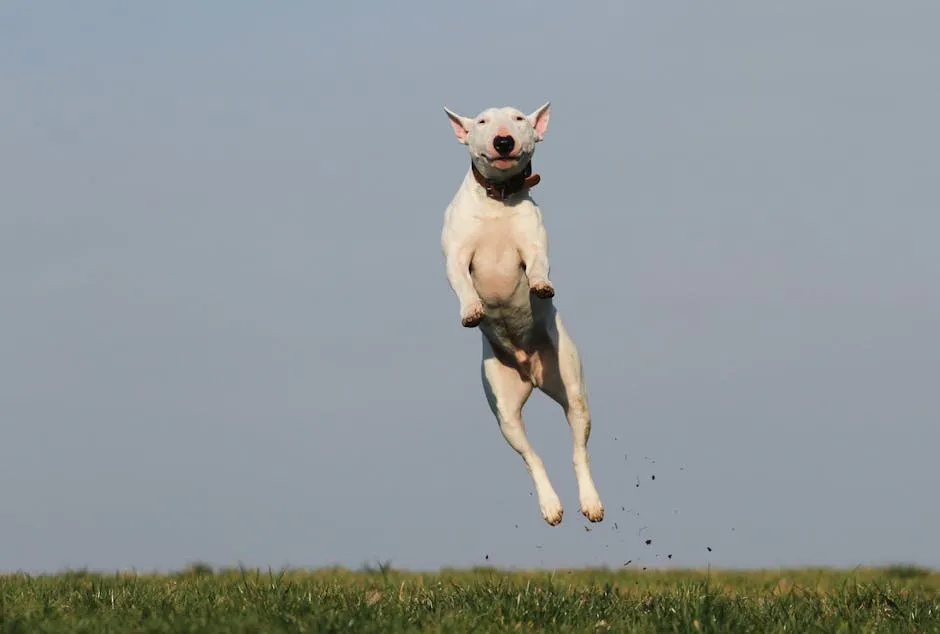
Choosing the Right Colors for Toys and Training
Best Practices for Selecting Toys
Colors that Stand Out
When it comes to toys, color is crucial. Dogs see blue and yellow best. So, if you want to keep your furry friend engaged, opt for toys in these colors. A bright yellow ball against the grass? Now that’s a winner! Dogs can easily spot these hues, ensuring endless fun during playtime. You’ll notice your pup chasing after that blue frisbee with great enthusiasm. It’s all about visibility, folks!
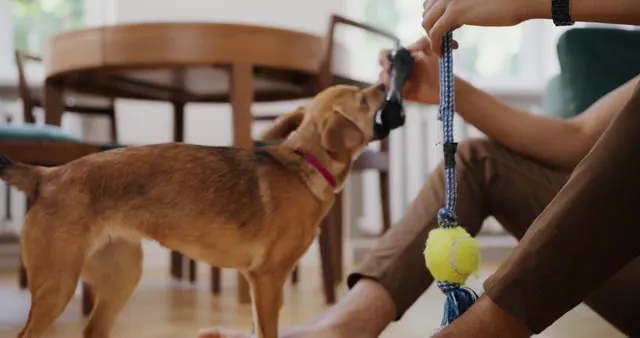
Additionally, consider a durable chew toy like the Nylabone DuraChew Textured Dog Chew. It’s perfect for aggressive chewers and helps maintain your dog’s dental health while keeping them entertained!
Avoiding Difficult Colors
On the flip side, steer clear of toys in red and green. These colors can be confusing for dogs. A red ball on green grass? Good luck finding that! To dogs, those colors may blend into shades of gray or brown. It’s like looking for a needle in a haystack! So, if you want your dog to enjoy their toys, stick with colors they can actually see. Choosing wisely helps enhance your pup’s play experience and reduces frustration.
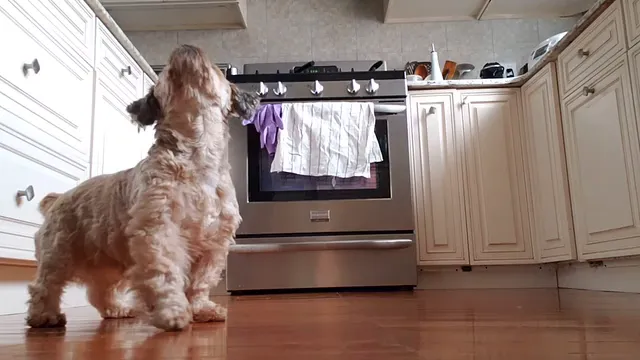
Training Tips with Color Cues
Utilizing Color in Training
Incorporating color into training can be a game-changer! Use blue or yellow objects as training aids. Dogs can recognize these colors more easily, making training sessions more effective. For instance, if you’re teaching your dog to fetch, use a bright yellow ball. It’ll stand out, catch their attention, and lead to successful training.
Creating a Colorful Training Environment
Consider using a mix of blue and yellow cones for agility training. This not only makes the course visually appealing but also enhances your pet’s ability to navigate. When your pup associates colors with specific actions, it adds a layer of excitement to their learning. Training becomes more engaging, and you’ll build a stronger bond with your furry friend in the process! So go ahead, sprinkle some color into your training routine!
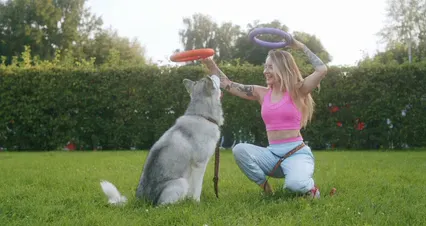
To make training even more effective, consider using a Dog Training Clicker. This simple tool can help reinforce positive behaviors and make learning fun for your dog!
FAQs
Can dogs see in the dark?
Yes, dogs excel in low-light conditions. Their superior night vision allows them to navigate better than humans when the lights go low.
Does a dog’s limited color vision affect their daily life?
Not really! Dogs rely heavily on their incredible sense of smell and hearing. Their limited color vision doesn’t hinder their ability to enjoy life.
Can dogs recognize colors?
Definitely! Dogs can see and recognize colors, especially blue and yellow. This ability helps them engage with their surroundings.
Why do dogs seem to struggle to find certain colored toys?
Toys in red or green might blend into natural settings, making them hard for dogs to spot. Their vision is tailored to different shades.
What colors should I choose for dog toys?
Opt for blue and yellow toys! These colors are easier for dogs to see, ensuring they have a blast during playtime.
And don’t forget to keep your pup hydrated with a Dog Water Bottle with Bowl. It’s perfect for walks and adventures, ensuring your furry friend stays hydrated!
Please let us know what you think about our content by leaving a comment down below!
Thank you for reading till here 🙂
All images from Pexels

